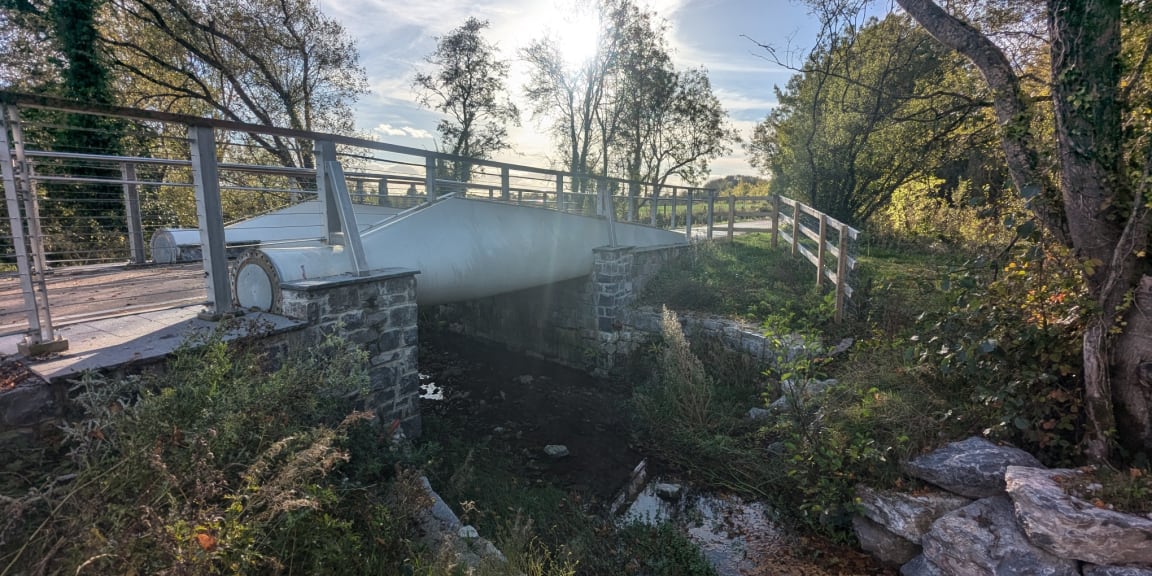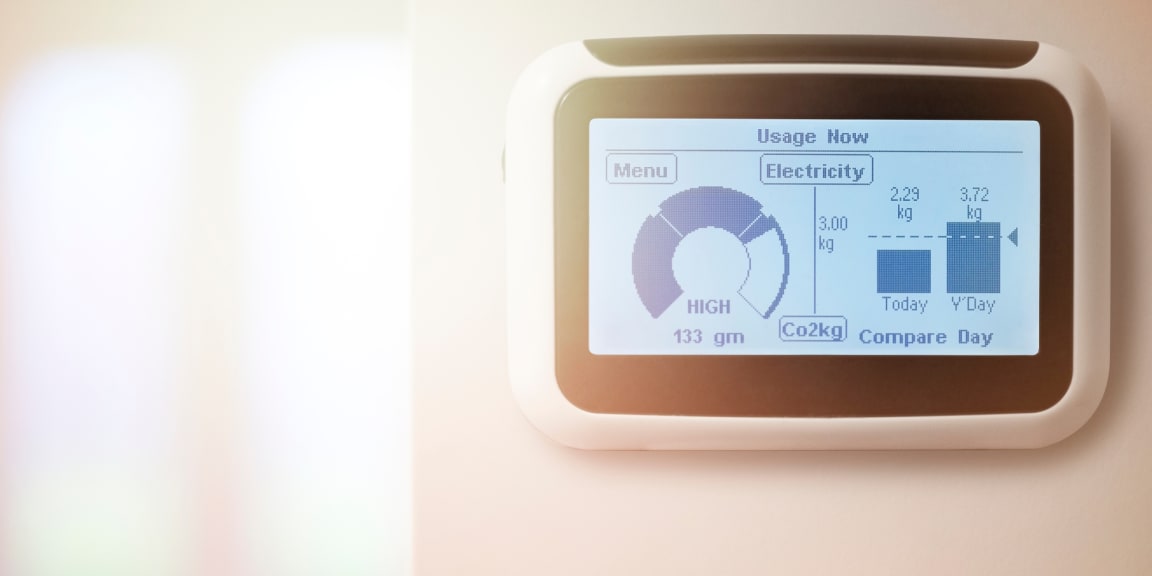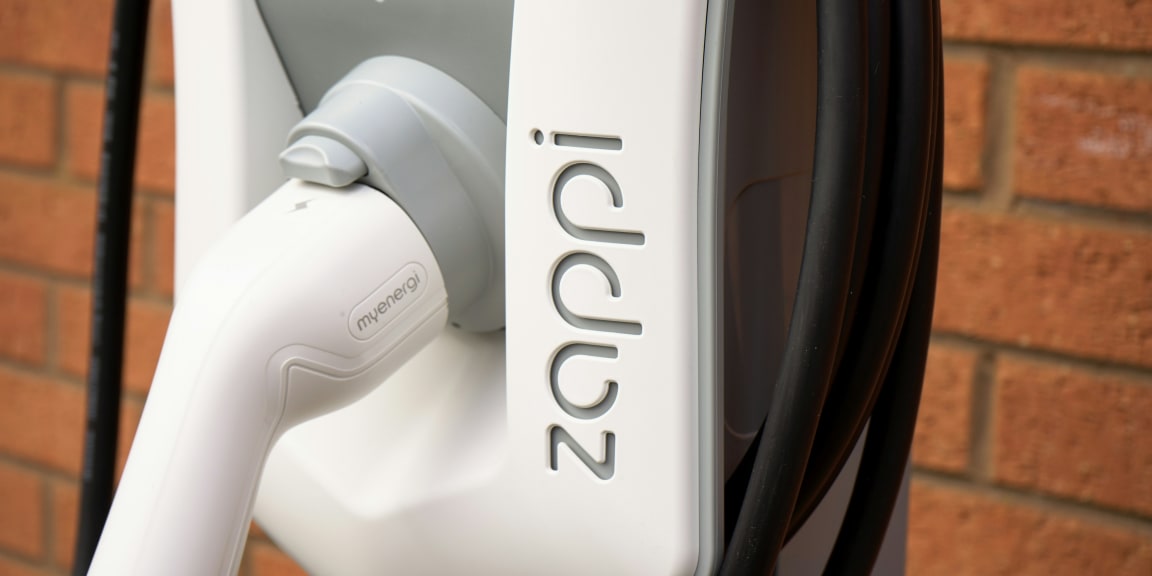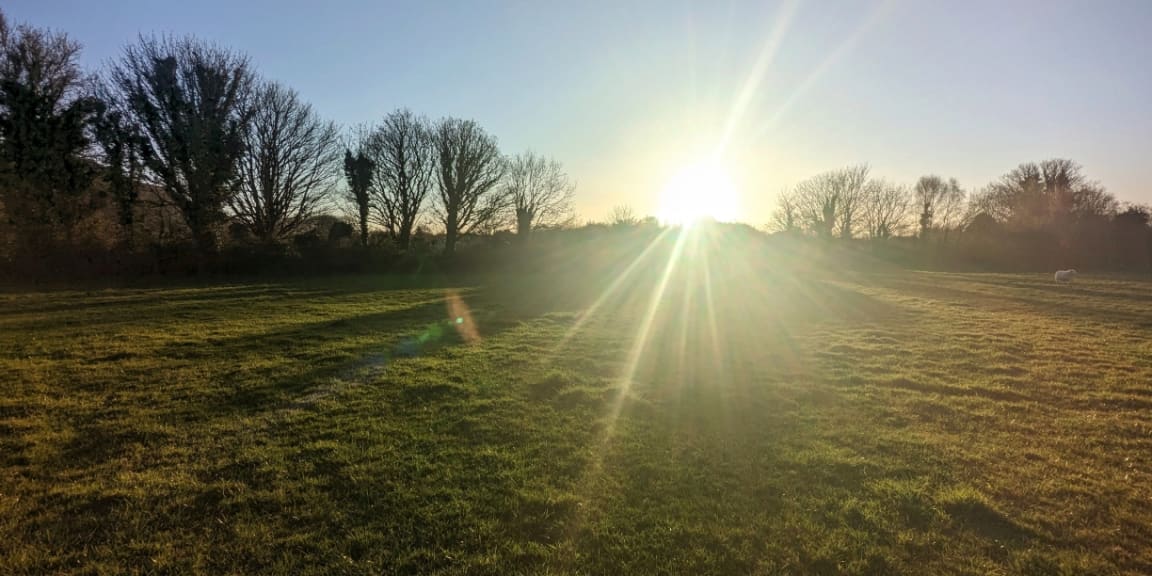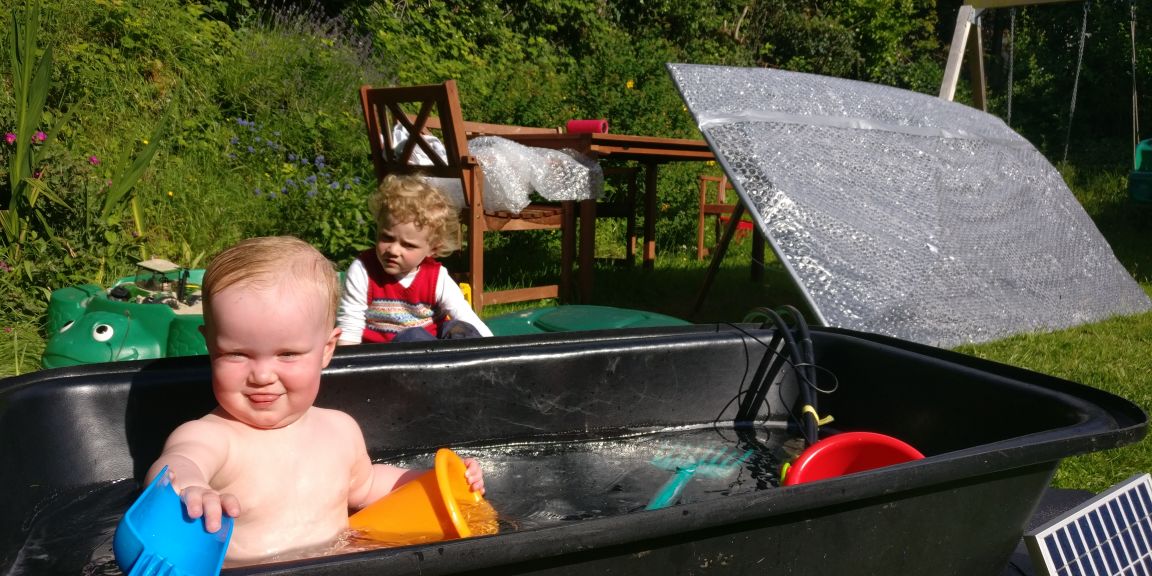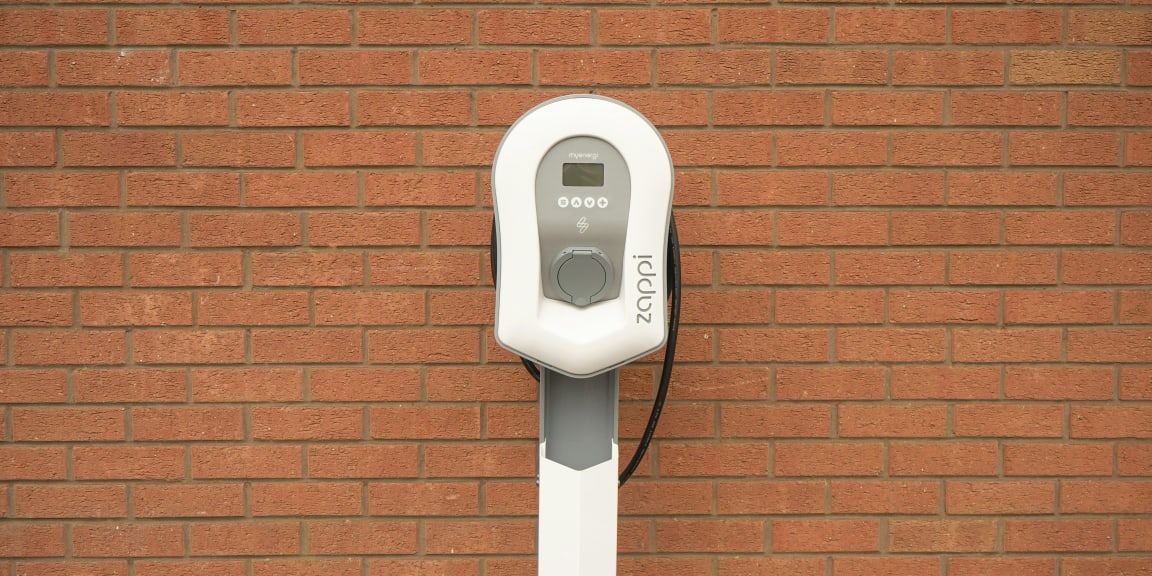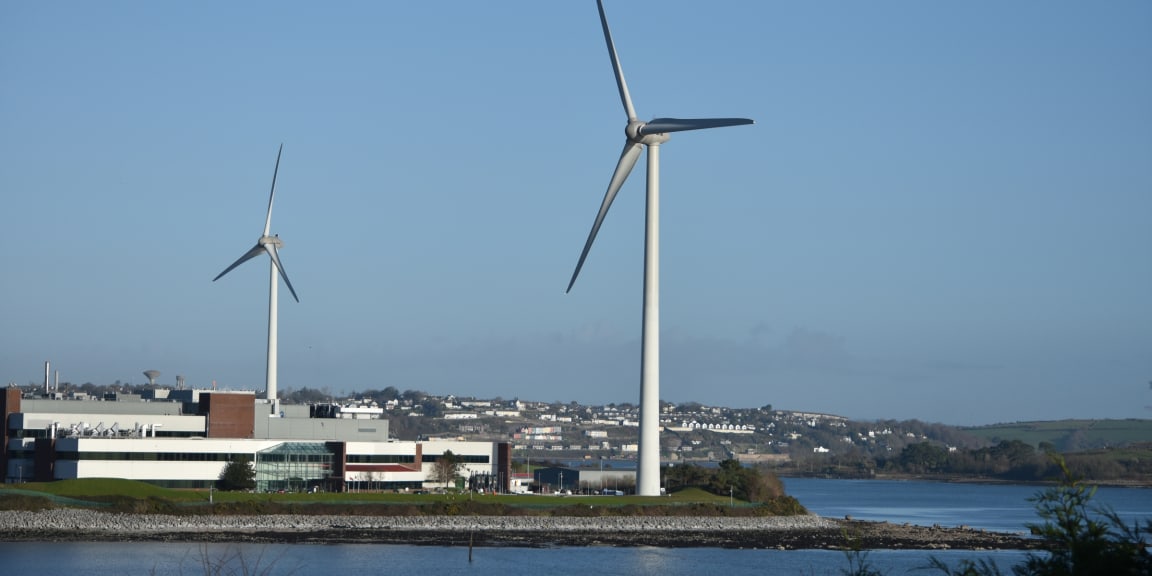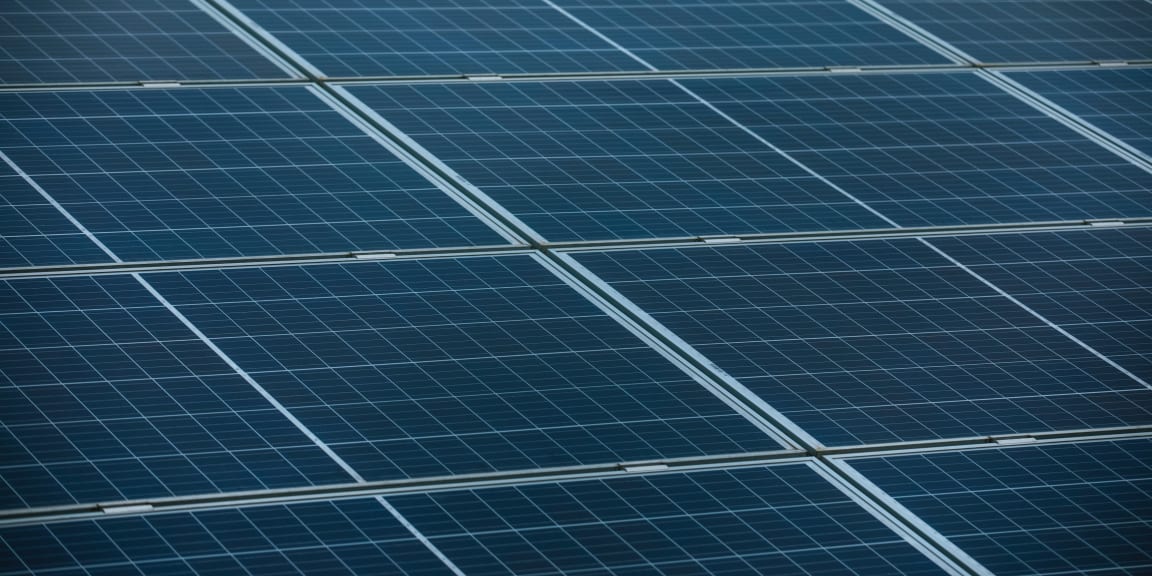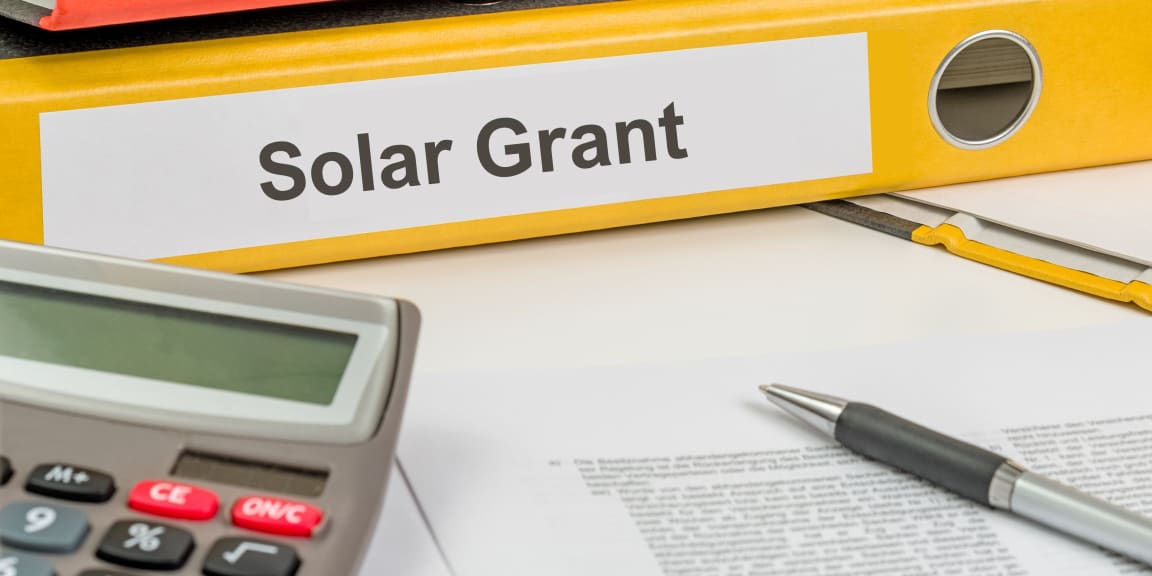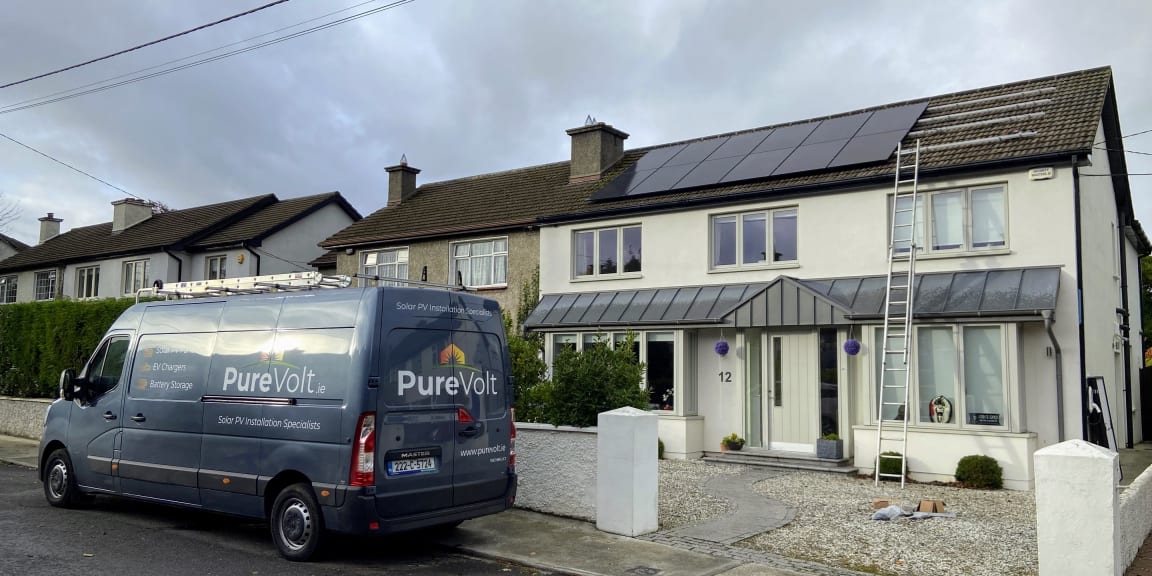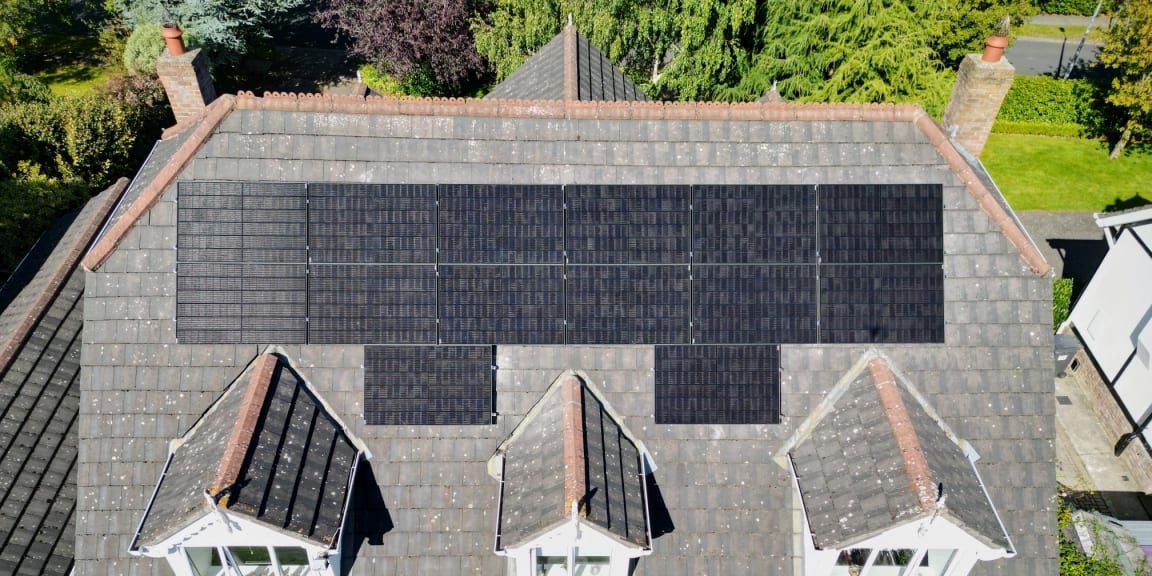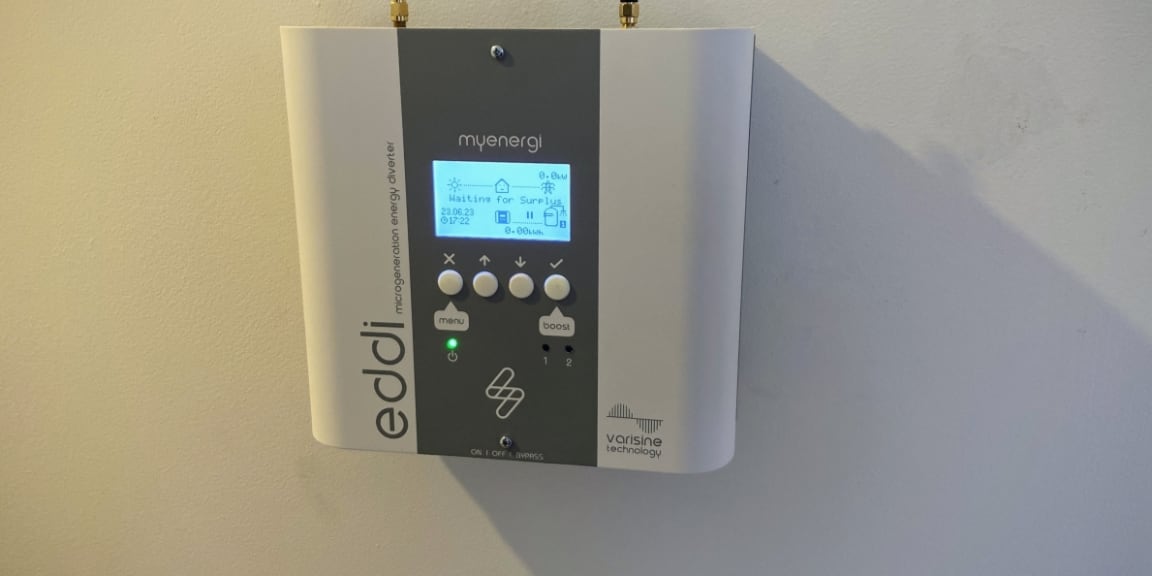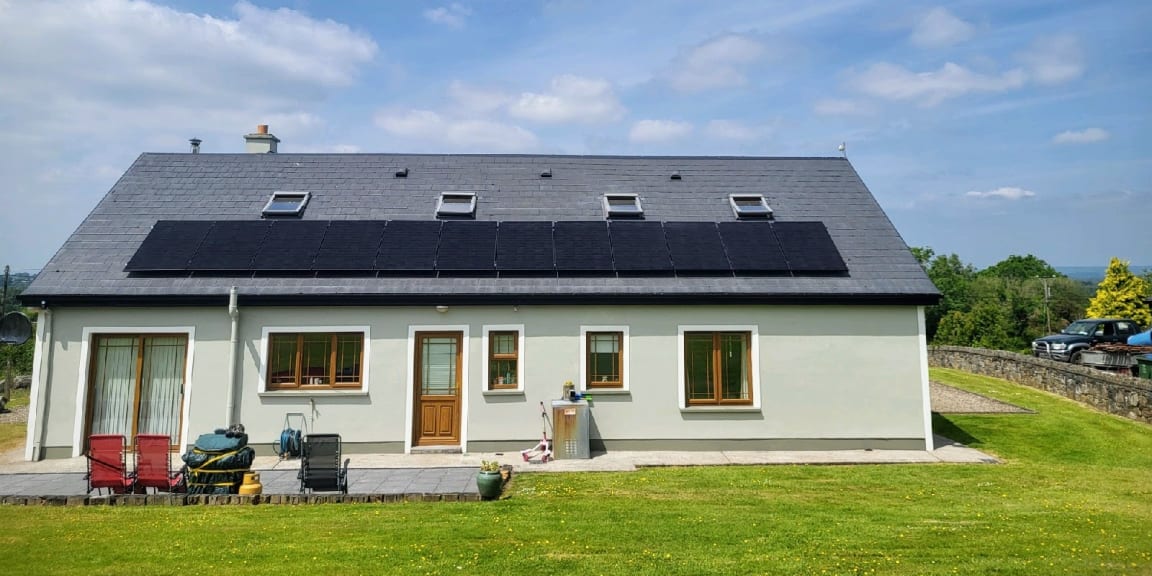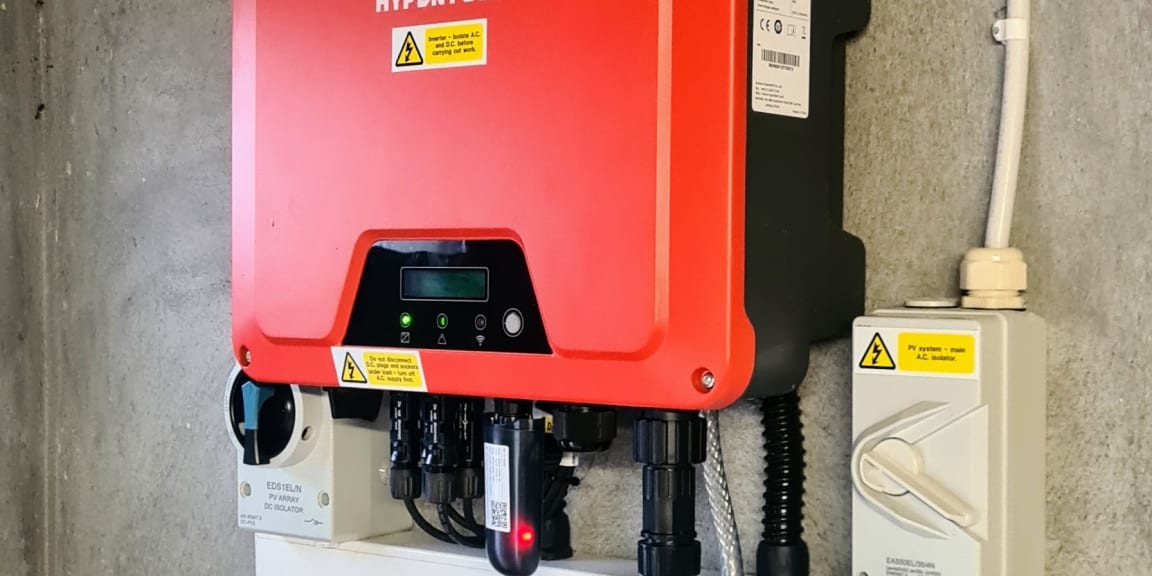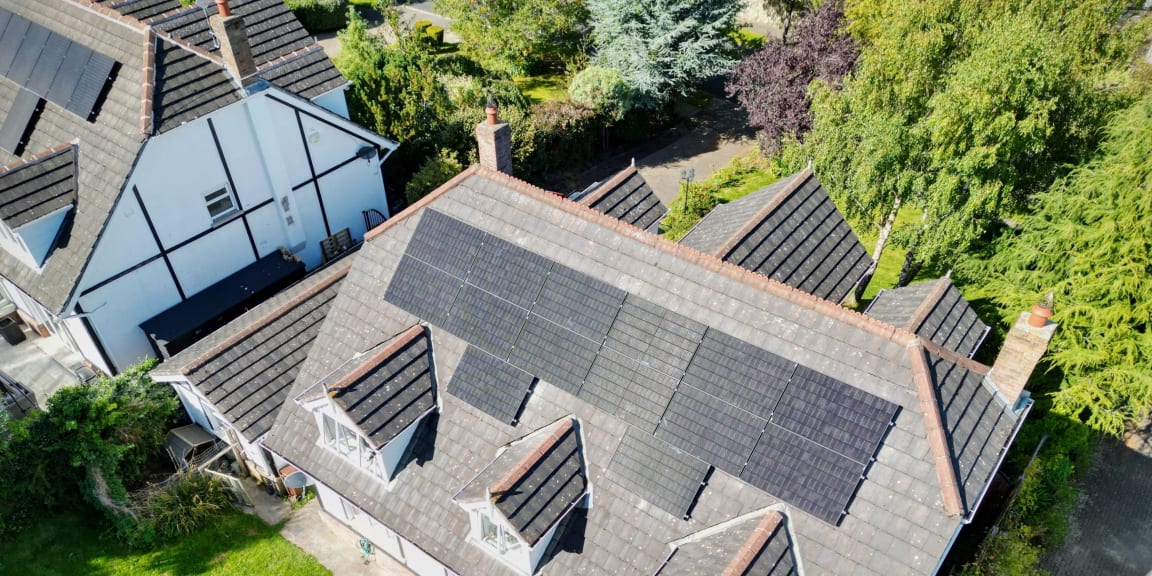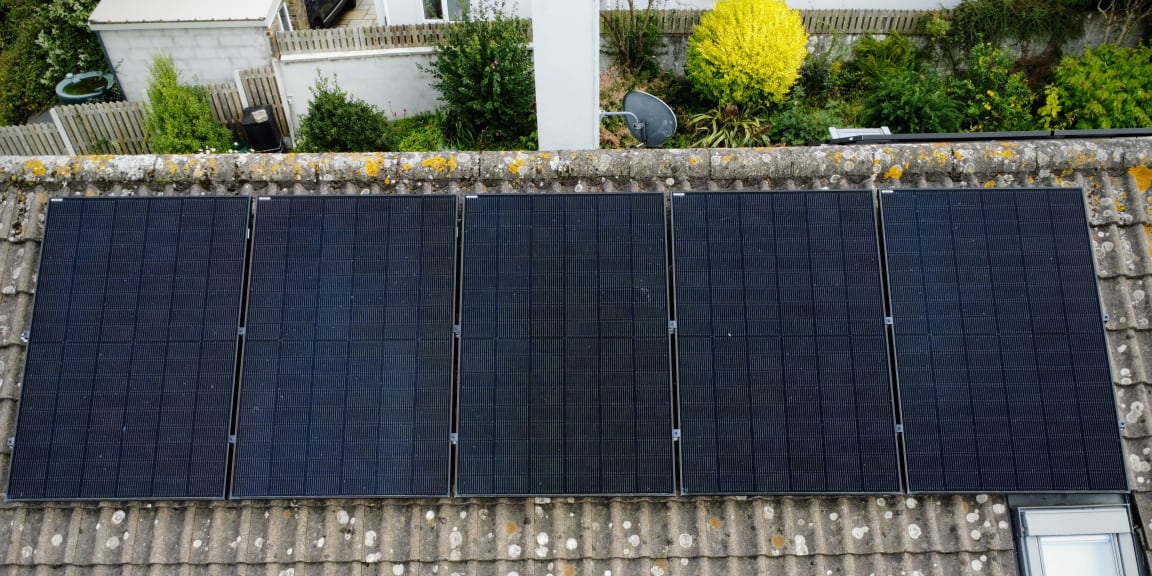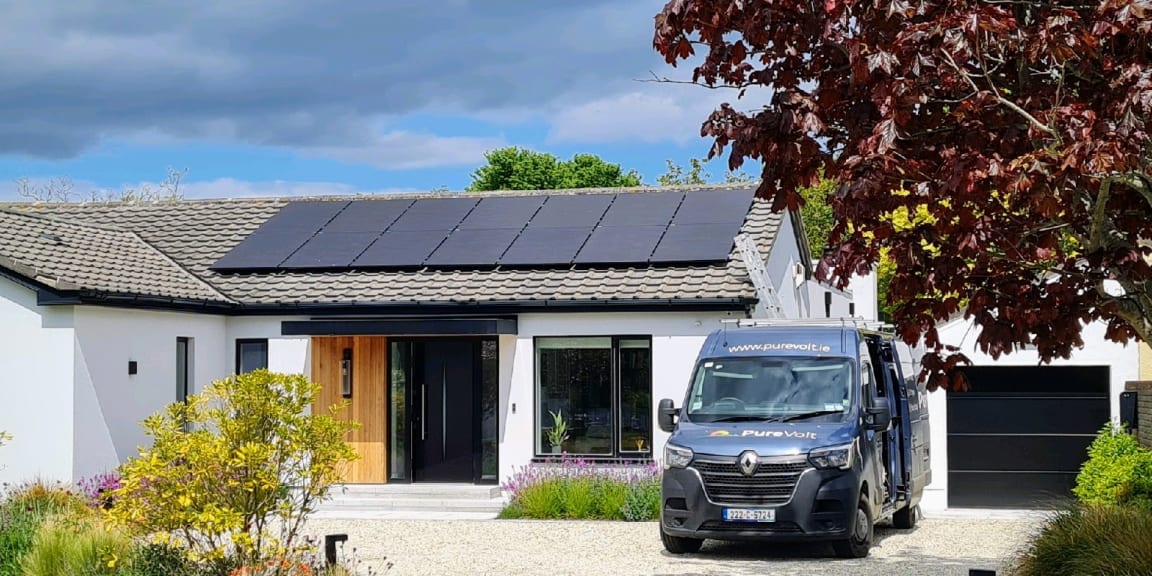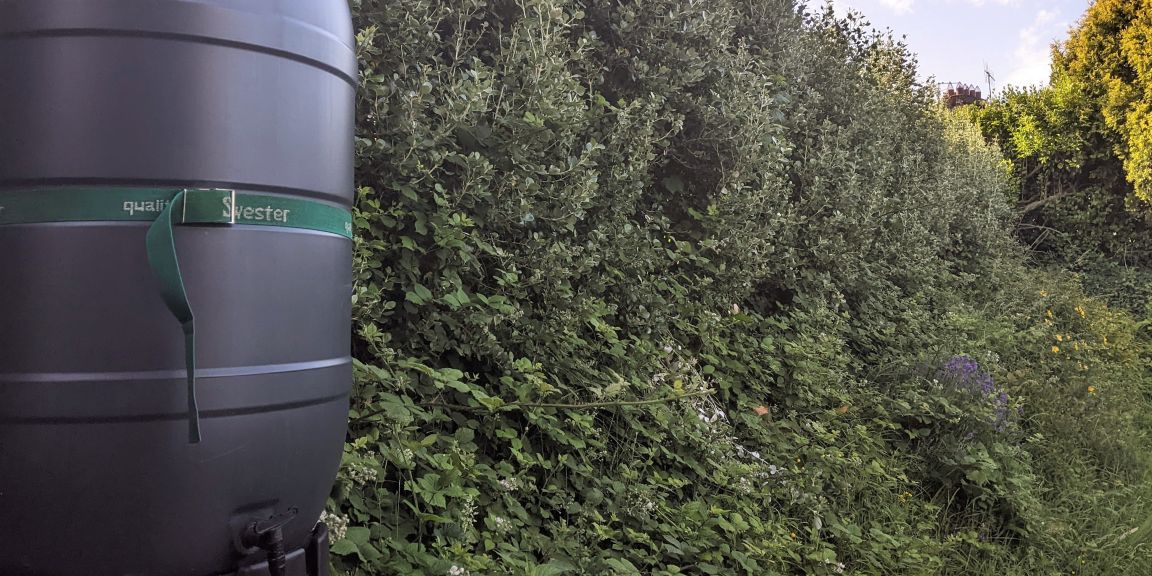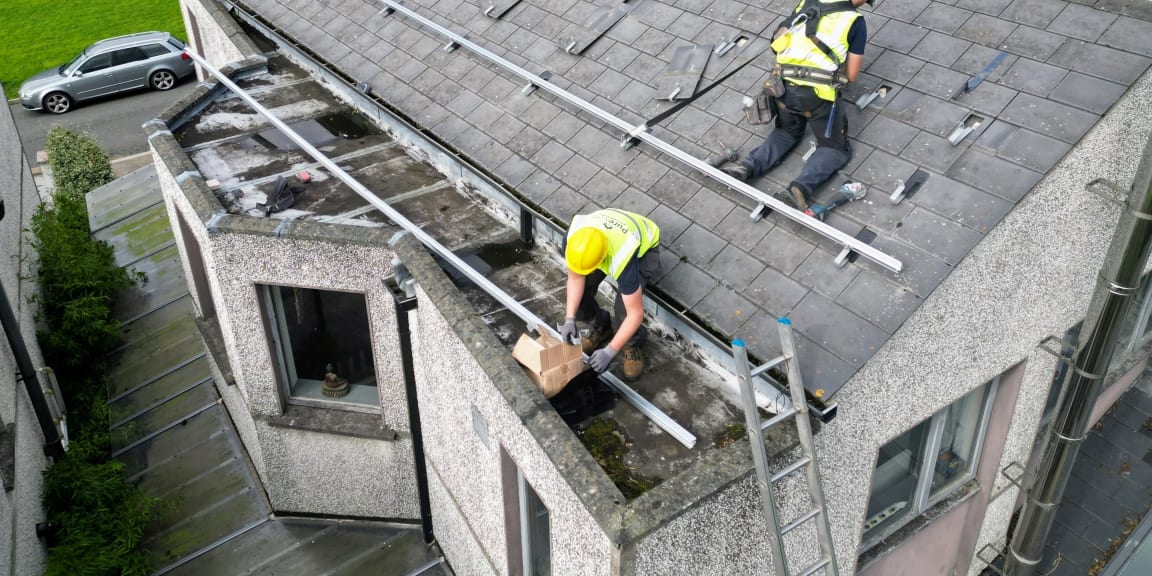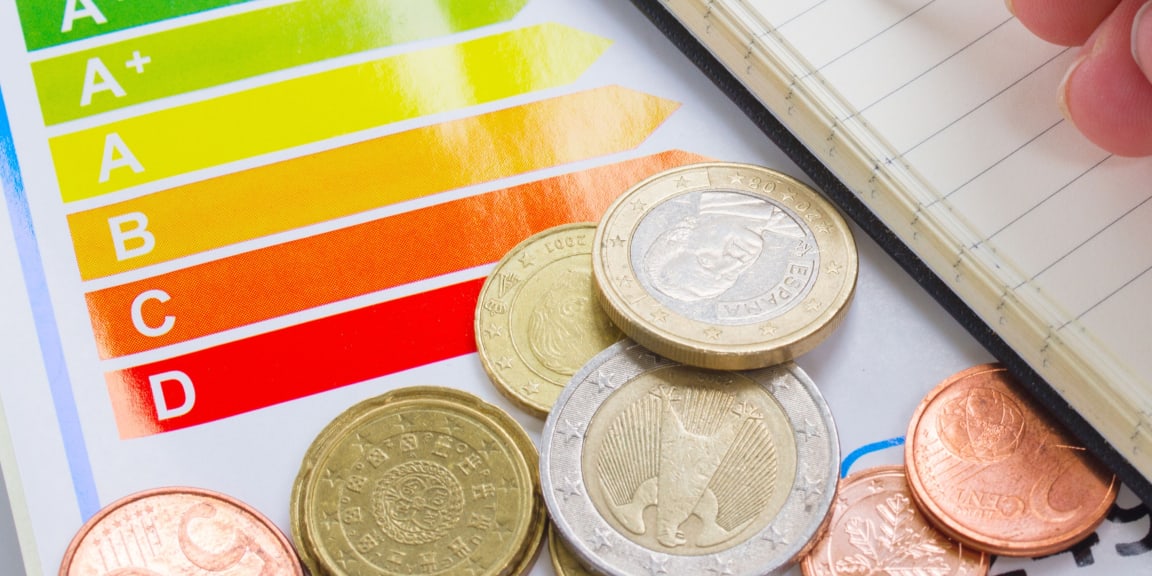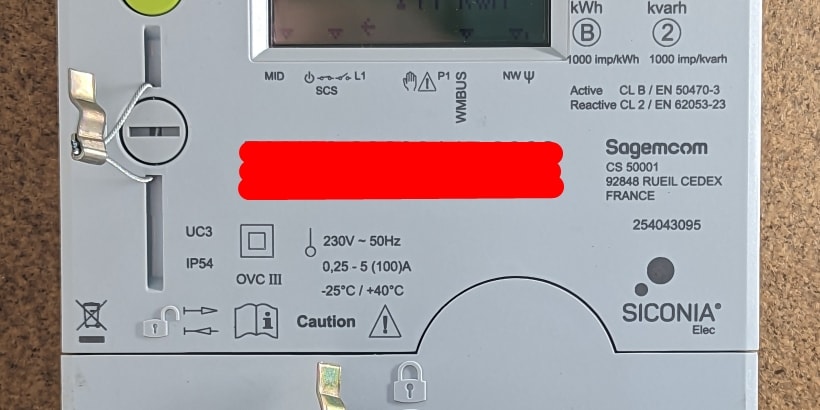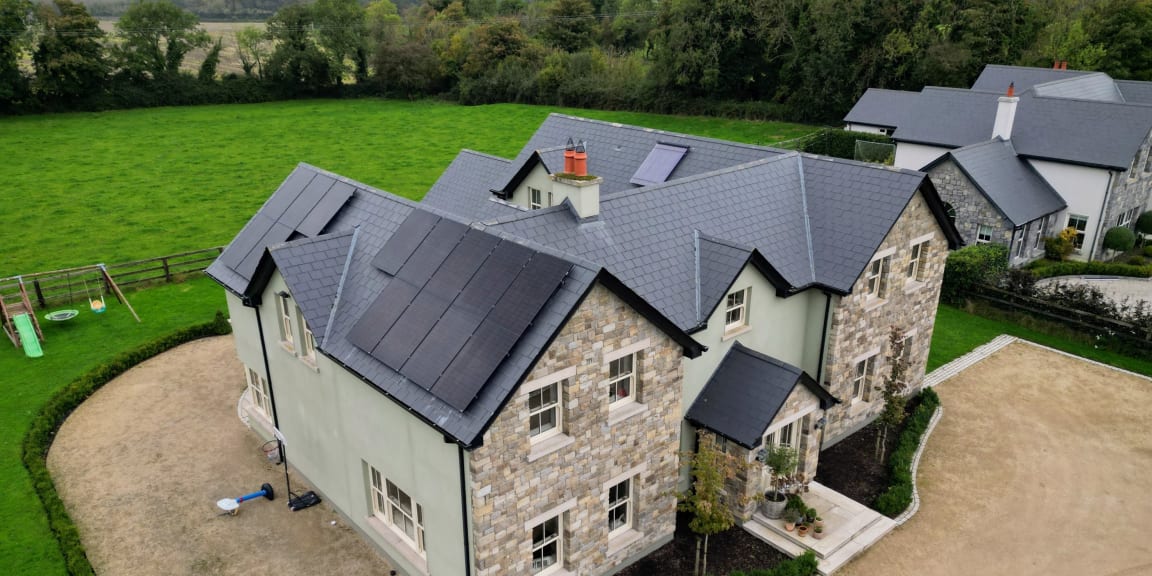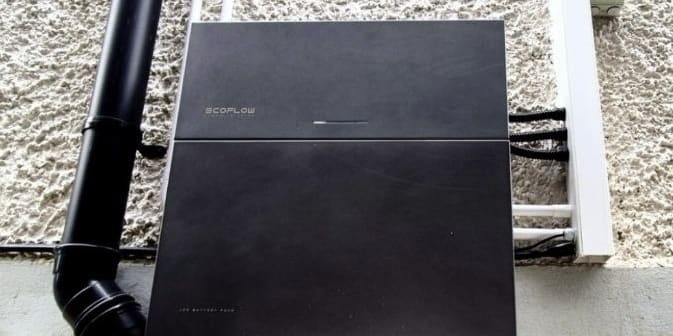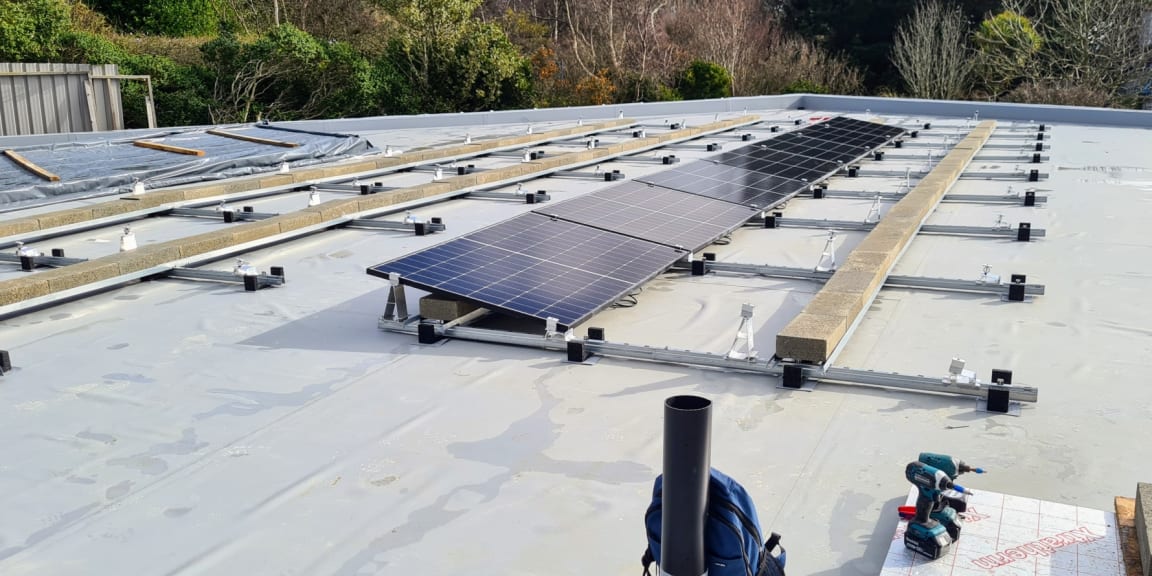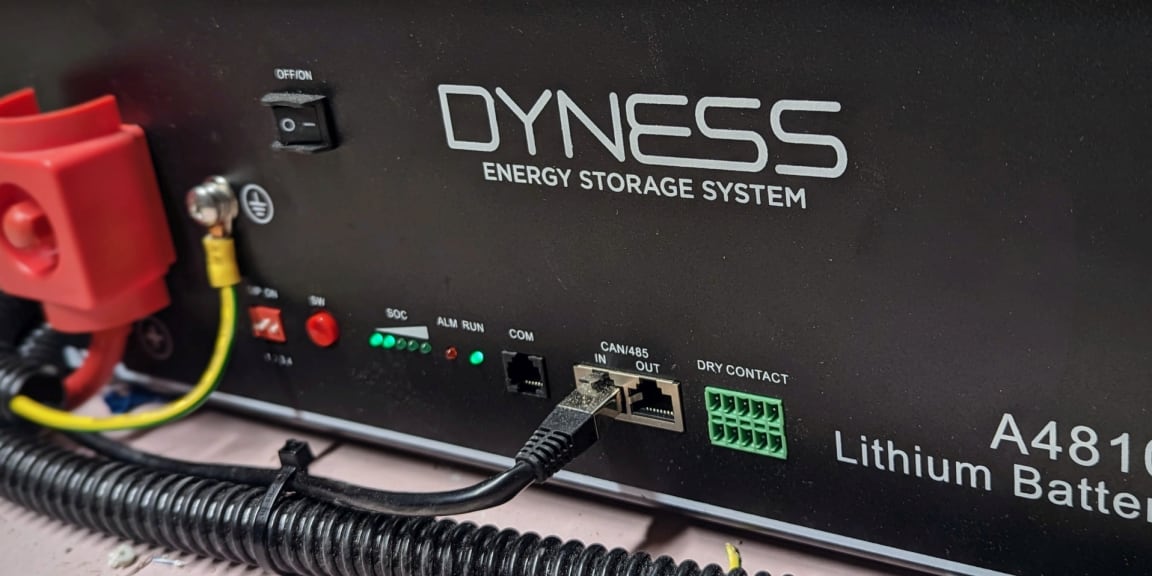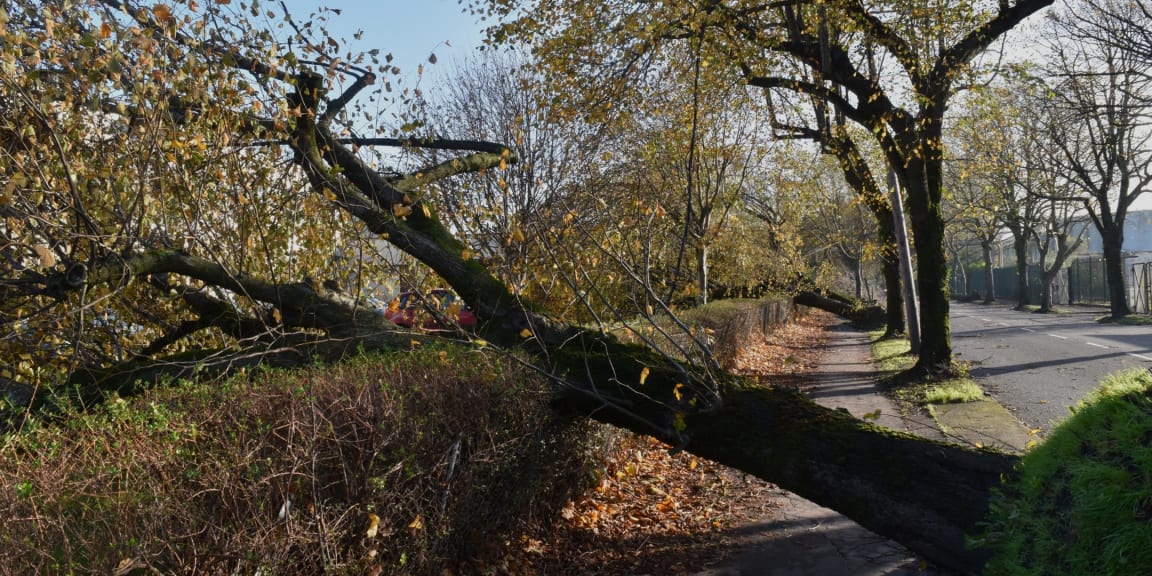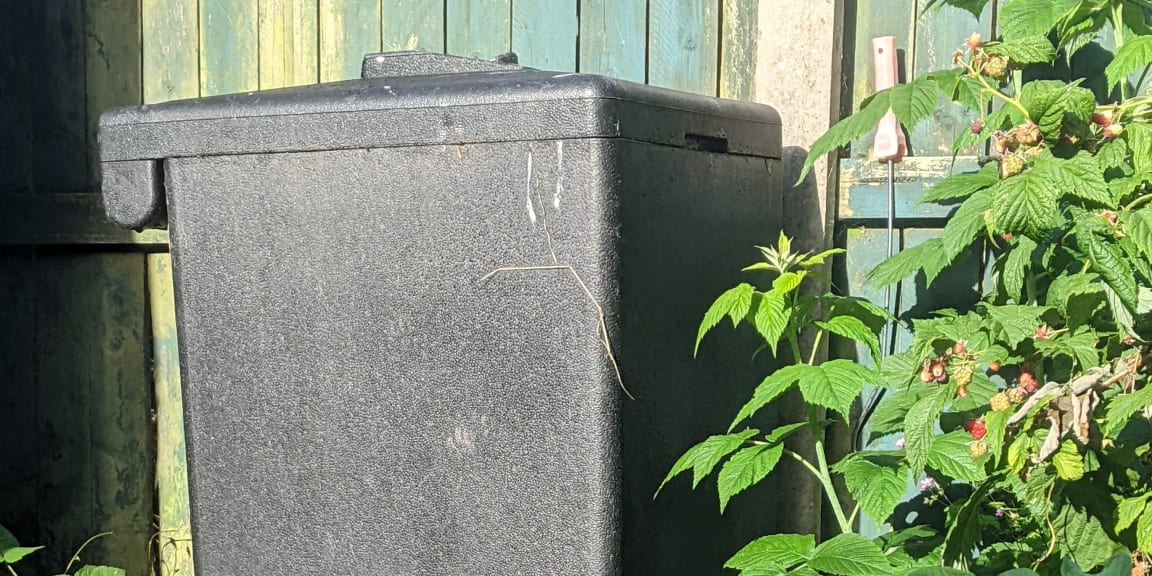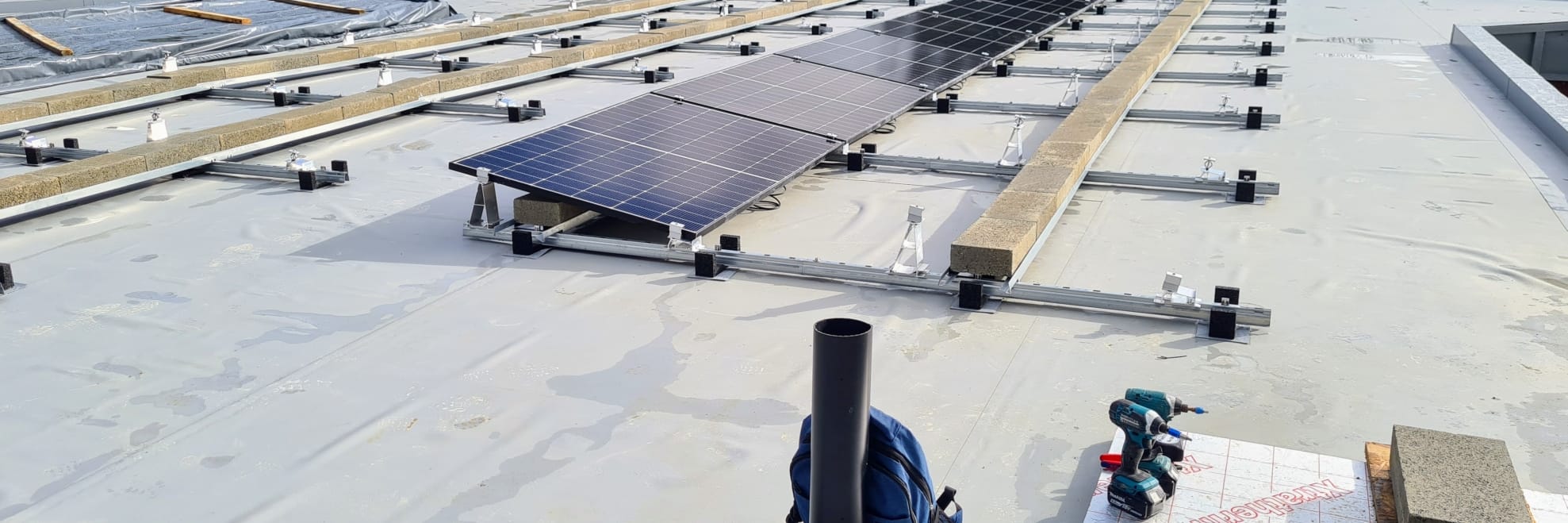
All about solar panel mounting equipment
How your panels are fixed to your roof
One of the most crucial aspects of a solar PV panel installation is securely attaching the panels to your roof. The panels and the mounting equipment must be fitted securely and safely, without compromising your roof. Below is all you need to know about solar mounting equipment.
What is a solar mounting system?
Also known as a solar racking system, solar mounting systems are used to securely fasten solar PV panels to a roof structure. The system is designed to be easily retrofitted to existing houses.
Most solar PV systems installed in Ireland are mounted directly onto the roof frame, above the roof tiles or slates.
What roof types work for solar?
Pitched roof types
Solar panels can be fitted on just about any roof type. They work very well with all the main roof types here in Ireland.
Flat concrete tiles, fibre cement slate, pan tile / Roman tile / wavy tile and natural slate are the most common types here in Ireland and solar panels can be fitted to any of those. Natural slate takes a little longer than the others, and so the installation process might take half a day longer.
Flat roof types
Solar panels can be installed on almost any type of flat roof without compromising its waterproof integrity. In such cases, a frame is added to tilt the panels towards the sun.
Do I need a structural engineer's report to add solar panels to my house?
No, apart from certain unusual scenarios with flat roofs.
The only exception we come across is the odd scenario with certain types of flat roofs that might require a structural engineer's report. We would visit your property first and let you know if that's the case with your flat roof, but it is rare.
Advanced and other questions about solar panel mounting equipment
This section is for those with more advanced questions about solar panel mounting equipment. If you have any other questions about solar panel mounting equipment, please don't hesitate to get in touch.
Is the solar mounting suited to the Irish climate?
Yes, solar PV is a proven technology in Ireland and has withstood the harshest weather conditions over the past 20 years.
All good quality, reputable solar mounting manufacturers have the relevant certificates showing their respective products have been tested to withstand the harshest weather conditions.
Is my roof still watertight underneath the panels?
Yes. The roof underneath the panels will be completely watertight. The panels sit above your existing tiles / slates.
Will it cause roof leaks?
Hiring a professional and experienced installer will minimize the risk of roof leaks. All solar PV mounting systems are designed to minimise penetration of the roof's weather-tight surface.
A properly installed system using the correct components should not create any leaks in the roof during the lifespan of the solar PV system.
Are solar mounting systems stormproof?
We have been getting a lot of storms in Ireland lately. It is a valid question to ask whether solar panels can withstand extreme weather events like Storm Ophelia.
The answer is that all solar PV mounting systems are wind tunnel tested to mimic tough storm conditions.
What about flush / integrated solar panels?
In new-build houses, you may sometimes find solar panels integrated directly into the roof. Here the solar panels are flush with the surrounding tiles, and the panels make up part of the roof itself. That needs to be planned as part of the design and build of the house.
For retrofitting solar panels (i.e. adding to an existing house), your original roof remains the same with the solar panels sitting above your existing tiles / slates.
What are the components required to fit my solar panels to the roof?
Roof Hook — The roof hooks anchor the solar panel system. A roof hook is effectively a metal bar that slides up between the tiles / slates on your roof and attaches to the main structure of the roof.
Rail — The rail is what the solar panels sit on top of, and this rail is then secured to the roof hook, which is secured to the roof frame.
Clamps — Clamps are the parts that secure the solar panels to the rail.
Flashing — Installing solar roof hooks requires moving or modifying slates or tiles. Solar flashing is a material that is used to keep your roof watertight.
What is the warranty on solar mounting systems?
The standard warranty is 10-years as standard and similar to solar inverters, this can be extended to 15, 20 and 25 years.

